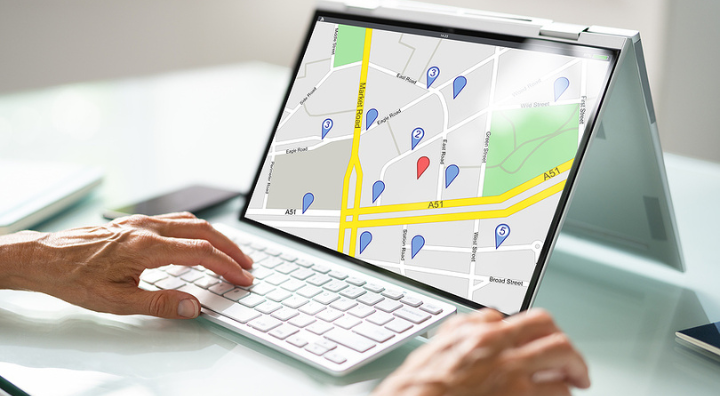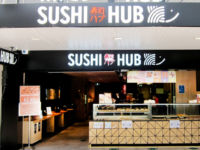As a location intelligence consultancy heavily involved in the Australian franchise sector, GapMaps’ is often asked about franchise territory design. The questions we’re most frequently asked are ‘How many franchise territories can we create and how do we best define the territory boundaries?’
Primary catchment areas
The starting point for franchise territory analysis is understanding and defining the primary catchment area being serviced by the store (or mobile service). By primary catchment area we’re referring to the area within which the majority of customers will commence (or sometimes conclude) their purchase journey.
Franchisors are notoriously poor at estimating their primary catchment areas. When we ask franchisors about the catchment area being served by their business, they’ll routinely talk about the customer who travels from 10km or 15 minutes to visit them. Now that may be true, but when determining catchment areas, we’re solely interested in what the majority of customers do, and not what ‘outliers’ do.
Because franchisors are poor at estimating catchment areas, and because it’s fundamentally important for assessing franchise territory potential, we’re strong advocates for the collection of customer address data. It doesn’t need to be personalised and, in most cases, it doesn’t require street number or name. But collecting suburb data and attaching that to a customer name or customer ID is enormously valuable.
Territories need to align with the catchment area
So how large are the primary catchments?
The answer is usually about half as large as the franchisor initially thinks. A childcare centre primary catchment will typically be around 2km or less than 5 minutes, a pharmacy is similar and a café in a commercial area might have a primary catchment as small as 100 metres. We work with many fitness and wellness franchise systems and their primary catchments rarely extend beyond five minutes.
Franchise territory sizes should largely align with the primary catchment area. If the territories are too large there will be customers who find the franchise location inconvenient to visit. In the case of a mobile franchise system, the customers are too far away for the franchisee to serve conveniently and efficiently. And if the franchise territories are too small, there are insufficient customers within each territory. Inevitably there’s cannibalisation with franchisees competing for the same customer.
Target customers and penetration rates
When establishing the catchment size, we’re interested to define the target customer within the catchment. People within a catchment do not have equal value for the franchisee – some will be likely to visit regularly, some might sometimes visit, and many others will not transact with the business at all. There are many ways to define a core customer and it’s often that demographic criteria are very useful – what gender, age, income, family grouping, profession etc., best describes the core customer?

Once the core customer profile is defined, we can calculate the customer penetration rate, and at this point a case study may be useful. Suppose a fitness club has 1,000 members and their target customer is aged 20-35 with a personal income above $85,000 or household income above $110,000. If there are 10,000 of those people (target customers) within the primary catchment area and 1,000 of them are club members we have a penetration rate of 10 per cent.
Continuing with the fitness club example, if we know that a successful club requires 1,000 members and we know that existing clubs have a penetration rate of 10 per cent, then we also know that each new territory needs to provide at least 10,000 target customers within an area that’s not so large as to extend beyond the travel times that customers are prepared to travel.
De-risk growth by replicating what already works
Using this methodology, you can see that we’re forecasting business performance across new geographic areas based on what has already been evidenced to work. Growing a franchise system is complex and challenging; we can de-risk growth by replicating what has been proven to work.
And how big do we allow those territories to grow? Only as large as we can see evidence of customers being willing to travel at the existing locations. So, if the primary catchment area in the existing locations reflects a travel time of say 5-minutes, we don’t want to design new territories that need to be 10-minutes in size to amass the required 10,000 target customers.
And that’s not to say these larger territories can’t work. But it is to say that there’s no evidence based on current customer behaviour to support such large territories. In this example, if a new franchisee with the new larger 10-minute territory captures 10 per cent of the target customers within a 5-minute travel time (in line with the existing clubs), they’ll fall well short of attracting the target 1,000 club members.
Set minimum criteria
We also need to reflect on the fact that outlet performance is a function of, not just the catchment, but also the micro location attributes. For example, a café requires a retail strip or shopping centre that it can anchor to. And our analysis consistently shows that better performing fitness clubs and wellness centres are attached to retail strips or neighbourhood precincts with a major supermarket.
When designing or building territories, we’ll set minimum criteria relating to the presence of other retail activity in the territory. We will often ensure there is a hub of the desired retail activity in the centre of each territory that we design.
The final territory design question relates to the territory boundaries. In this example, we’ve discussed a 5-minute travel time, but that provides a boundary line that can only be viewed on a map. It is very difficult to describe the territory area to a potential franchisee. Our approach is usually to grow the territory size using suburb boundaries until we reach the desired count of target customers. And we don’t allow the territories to grow beyond the known travel times of existing customers.
Suburb boundaries are preferable to postcode boundaries as postcodes can be too large and unusually shaped. In some instances, we can use smaller geographic boundaries like SA1s, but they’re also difficult to describe to an incoming franchisee.
How many territories?
With the territory criteria defined, we can discuss the market holding capacity. This requires some spatial mapping software and calculates the total number of territories that satisfy the design requirements (target customer count plus micro location attributes) within the maximum geographic area.

It’s often the case in regional markets that customers are prepared to travel a little further to visit a retailer. When designing franchise territories this will often mean the imposed maximum territory size will be expanded. So the 5-minute maximum travel time in metro might become 7-minutes in regional markets.
Once all territories are designed (and counted) the franchisor should consider how best to progressively sell the territories. Consideration needs to be given to both timelines and geographic areas.
Make use of what we have and collecting customer data
We’re fortunate in Australia to have access to some of the most granular and informative demographic and retail data in the world. Our clients in SE Asia would love to have data even half as good as we have here in Australia. But for all that is available to us, it’s not particularly helpful if the franchise system isn’t collecting their own customer data.
The starting point for franchise territory analysis and building boundaries will always be understanding and leveraging what we know about existing customer behaviours.
Top image: fitness locations. Bottom image: territory size. Source: GapMaps











